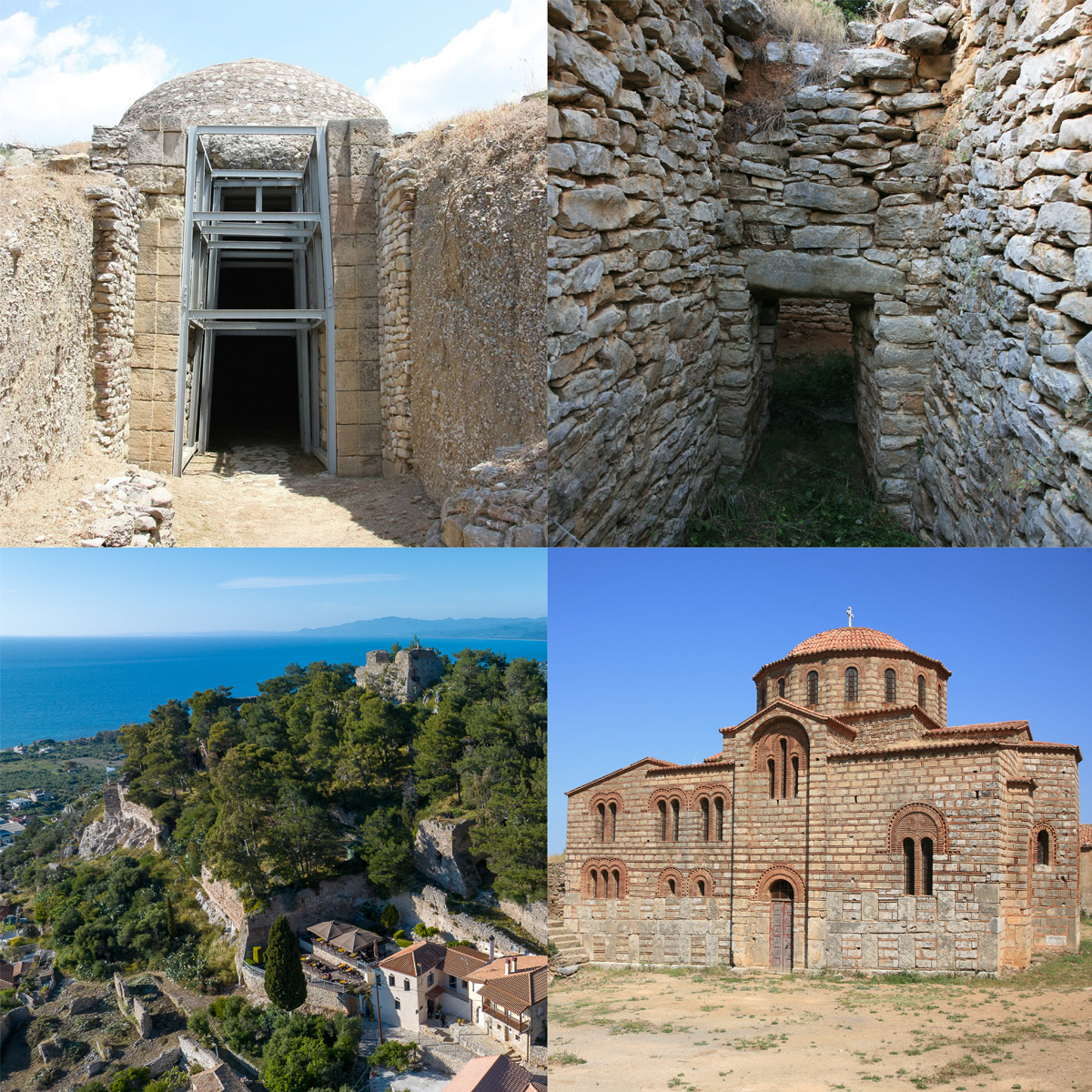
Peristeria, Mouriatada, Kyparissia, Filiatra, Christianoupolis
7 stops

24 131 Kalamata
27210 22534, 27210 26770
efames@culture.gr
24 100 Kalamata
27210 63100, 27210 26410
efames@culture.gr

The archaeological site of Peristeria has been excavated by Professors Spyridon Marinatos and Georgios Korres. It was the most prosperous centre of the western Peloponnese during the early Mycenaean times. The hill of Peristeria is naturally protected, with three steep sides and only the southern one providing ease of access. In addition, a fortified enclosure protects the hill with the tholos tombs and the settlement remains. Peristeria is widely known for the rich funerary offerings from the burial monuments, many of which are works of art made of gold and semi-precious stones with clear Minoan influences. Peristeria reached its peak during the early Mycenaean period (17th/16th century BC) until the 15th century BC. Then it gradually turned into a common settlement while another centre in the area of Mouriatada, possibly identified with Homer’s Amphigenia, began to strengthen. Evidence of habitation is also found on the hill of Peristeria during the Hellenistic and Roman periods. Very close to Peristeria and Mouriatada, Kyparissia was a site of diachronic habitation since prehistoric times. It reached its heyday after 369 BC, as a port of Messene. Contributing to this were the city’s contacts with the Ionian islands and with Italy. The worship of Dionysus, Apollo and Athena Kyparissia in the city is reported by Pausanias and documented in coin depictions. A bishop’s seat from the 4th cent. AD, it was renamed as Arcadia or Arcadià in the 7th or 8th century, when, pushed by the Slavic raids, scores of people from Arcadia found refuge in that area. In 1135 the Arab geographer Edrisi describes Kyparissia as a large and populous city with a busy port. Its fate turns, when in 1205 Messenia is conquered by the Franks. The byzantine castle, with sections of ancient masonry, is now extensively re-built. The itinerary continues to Filiatra, pausing at the restored byzantine church of Analipsi (Ascension) and coming to an end at Christianoi, a small settlement with the church of the Metamorphosi Sotiros (Transfiguration of Christ). This is a most significant byzantine octagonal type church, one of the largest in Greece, probably built as an episcopal church of the newly founded Archdiocese of Christianoupolis, by emperor Alexios I Komnenos.